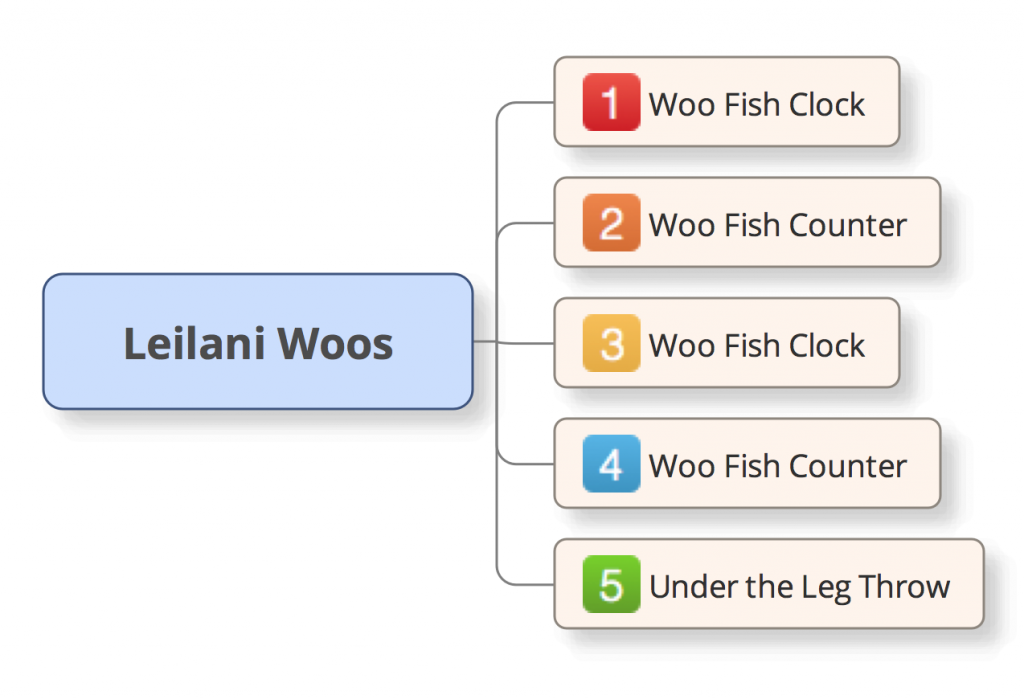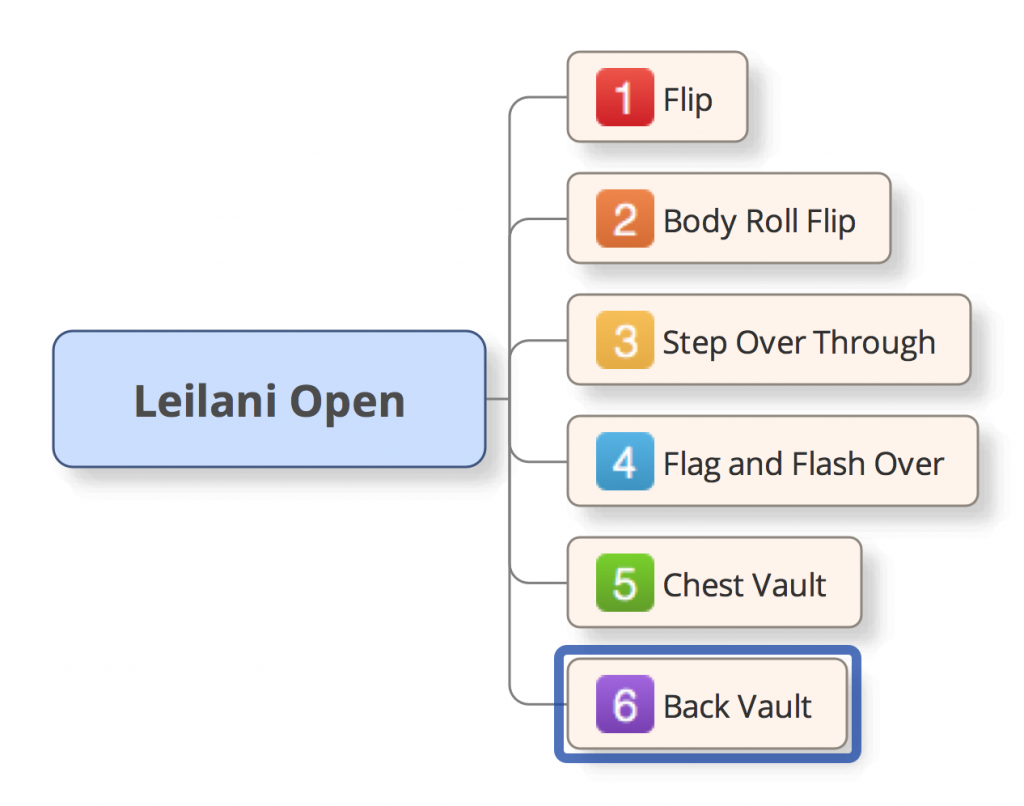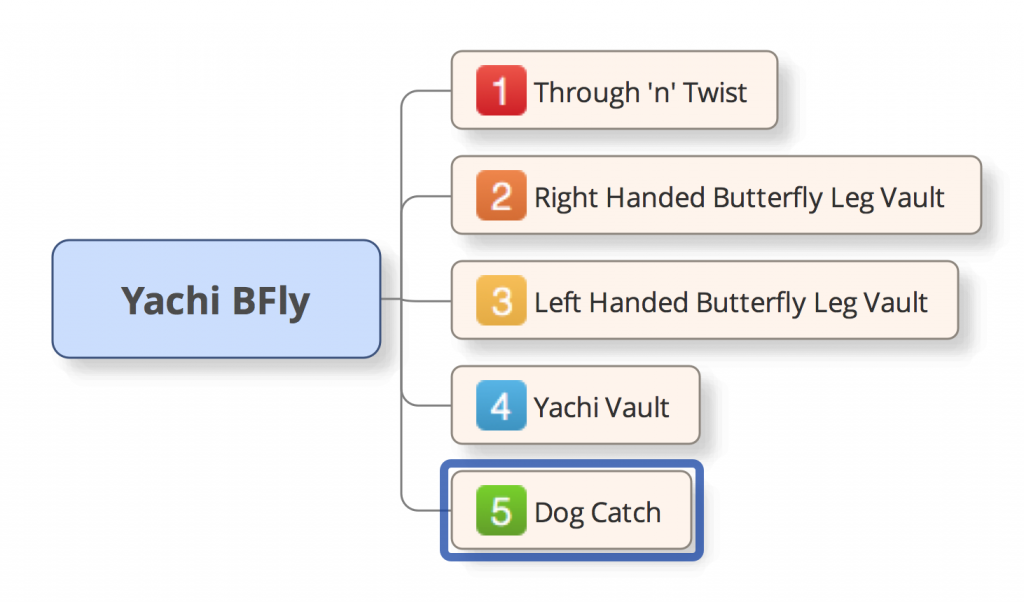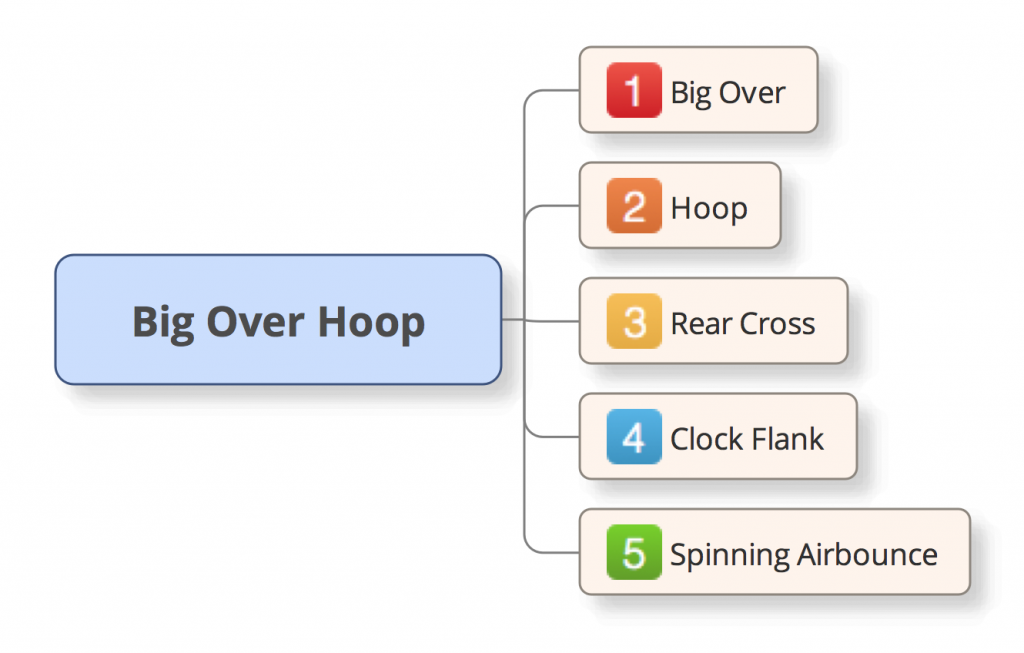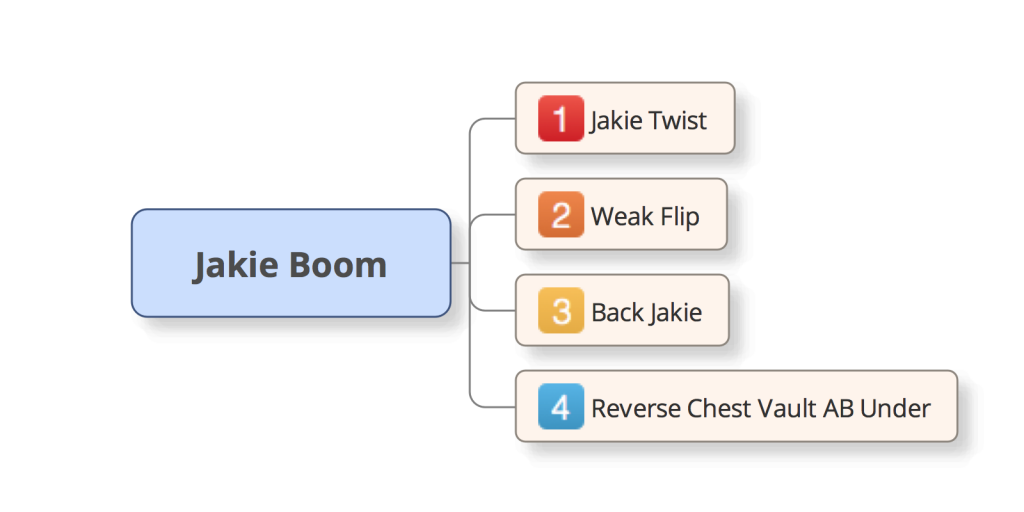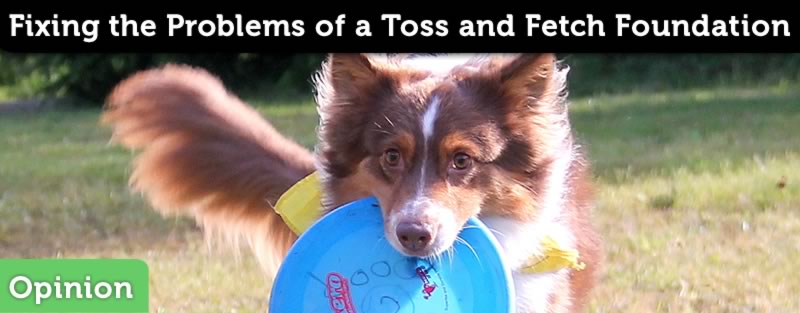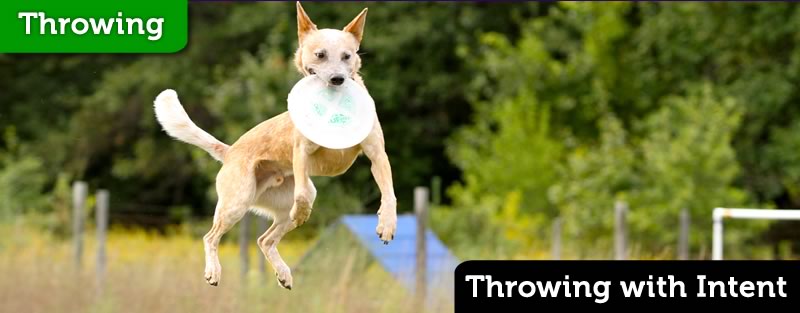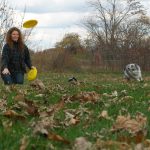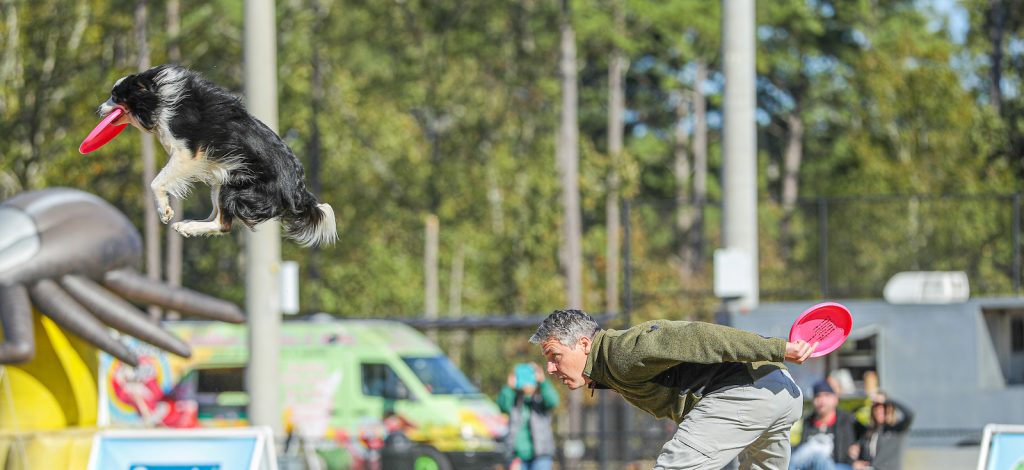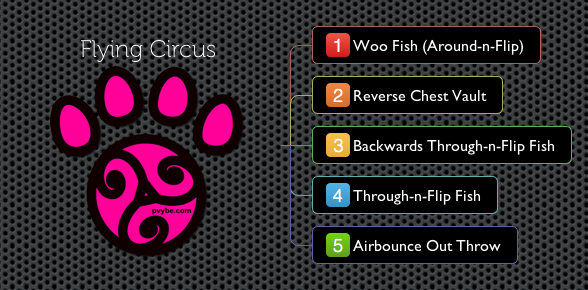
On Disc Dog Freestyle Routine Building — The Power of Naming Sequences
Building a routine is always a tough slog for new players. It can be paralyzing to not have clear direction and understanding. “How am I supposed to go out there and shake it, when I don’t know what ‘it’ is?”
This paralysis makes It is easy to avoid freestyle altogether. “I don’t think I want to play freestyle…” Or to have a game plan of “just go out there and wing it”.
I’m having some issues with Epic right now on this front. I’ve got a few more sequences to add to our routine, and am kind of paralyzed by the weight of needing to put something really, really good together. I’ve been avoiding serious routine work because it feels like work. So I guess what I should be saying is that routine building can be a tough hard slog, regardless of experience.
Got Sequences?
In an earlier piece I told you all that the best way to build a routine is to not build a routine, but to whip up a bunch of sequences and then link them together. If you do that you’ve got a routine.
Unlike a linear routine, a sequence based routine is modular and flexible. You can drop or add sequences without having to redo the whole shebang.
We build sequences with a Jam in a Flash methodology, all tricks get shuffled up and “dealt out”. The team plays them honestly, just the tricks dealt them, and lessons are learned, sequences are created, and sweet individual transitions between moves are assembled using the Art of Linking Tricks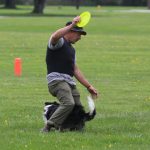 The Art of Linking Tricks is a sequence building methodology developed at Pawsitive Vybe leading to rapid development and deployment of disc dog freestyle sequences. Freestyle sequences are long behavior chains. A cued... More; a fancy way of saying “put a wait between each trick”.
The Art of Linking Tricks is a sequence building methodology developed at Pawsitive Vybe leading to rapid development and deployment of disc dog freestyle sequences. Freestyle sequences are long behavior chains. A cued... More; a fancy way of saying “put a wait between each trick”.
Naming Something Gives You Power Over It
So you’ve got a bunch of sequences but no idea what to do with them?Once a sequence comes into existence in your brain, give it a name. Any name will do, but it might be a good idea to give it a name that leads you to the content of the sequence.
They’re catchy names and they mean something to me. They also are strongly connected to each sequence.
Once I got the name in my brain, the whole sequence can be easily and instantly recalled.
I don’t believe that is possible with a list. The Routine as list of tricks is always based upon what is before or after it. Breaking up that long laundry list up into 5-8 memorable chunks means less decisions and less moving parts.
Less decisions and less moving parts means less things forgotten or misplaced.
Write it Down X Times Before Your Round
If I’m concerned about forgetting my routine, I write the sequence list on the back of each disc, starting at number 1.
- Jakie
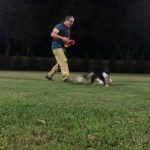 The Jakie is a trick where the dog intercepts the disc on the way to the handler's body and then uses the handler's body to safely and stylishly flip to land the trick.... More Boom
The Jakie is a trick where the dog intercepts the disc on the way to the handler's body and then uses the handler's body to safely and stylishly flip to land the trick.... More Boom - Big Over
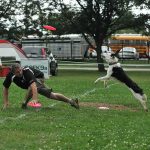 Most players have several overs and the Big Over is the largest, and most impressive of them. Frequently, the Big Over goes over the center of the handler’s body, but that is not... More Hoop
Most players have several overs and the Big Over is the largest, and most impressive of them. Frequently, the Big Over goes over the center of the handler’s body, but that is not... More Hoop A Hoop is an Over or Vault that travels through a hoop made from your arms or body. A Hoop expresses great teamwork and connection between dog and handler. Most Hoops are done... More
A Hoop is an Over or Vault that travels through a hoop made from your arms or body. A Hoop expresses great teamwork and connection between dog and handler. Most Hoops are done... More - Yachi BFly
- Repeating Rear Cross
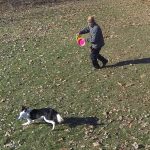 On a Rear Cross, the dog switches Flanks with the behind her. From clock to counter clockwise Flank or vice versa. Taken directly from the canine agility world, the Rear Cross is a... More
On a Rear Cross, the dog switches Flanks with the behind her. From clock to counter clockwise Flank or vice versa. Taken directly from the canine agility world, the Rear Cross is a... More - Loot the World
- Scoot
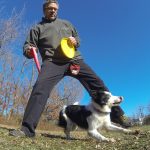 A Scoot is a Set Up Move where the dog scoots backwards between the handler’s legs. It’s a really clever Set Up Move, the image of your dog spinning around and shimmying backwards... More & Screw
A Scoot is a Set Up Move where the dog scoots backwards between the handler’s legs. It’s a really clever Set Up Move, the image of your dog spinning around and shimmying backwards... More & Screw - Flatwork
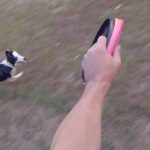 Flatwork is the stuff that happens between the catches. How the team moves and transitions, often without the disc, is flatwork. Flatwork concepts in disc dog are taken from the agility and herding... More Out
Flatwork is the stuff that happens between the catches. How the team moves and transitions, often without the disc, is flatwork. Flatwork concepts in disc dog are taken from the agility and herding... More Out - Reverse Leg Vault
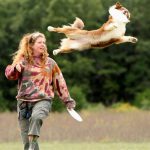 The dog uses the player´s body as a launching pad to jump for a disc. A Vault is a leaping catch from the handler’s body. The dog leaves the ground for the target... More Dog Catch
The dog uses the player´s body as a launching pad to jump for a disc. A Vault is a leaping catch from the handler’s body. The dog leaves the ground for the target... More Dog Catch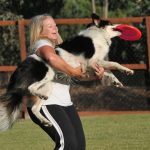 A Dog Catch is a great trick to use for hitting the crowd or for putting a strategic pause in your routine. The dog leaps to catch the disc and then you catch... More
A Dog Catch is a great trick to use for hitting the crowd or for putting a strategic pause in your routine. The dog leaps to catch the disc and then you catch... More
Writing that down, 5-10 times, one list on each disc, right before you go out is a powerful mnemonic device. You are not likely to forget that list.
Also, if you happen to forget you can flip the disc over and have a very quick list of your sequences. Odds are you’ll remember before the disc is even flipped over.
I can’t remember ever fully flipping a disc over to get my bearings if I wrote them on each disc before my routine. It’s never happened.
Get Power Over Your Sequences
Name your sequences and gain power of them. Give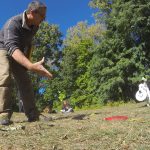 The Give is a retrieve to the hand. A cued Give is a foundational skill that is not super useful in the actual performance of disc dog freestyle, and has huge applications for... More them names that trigger the ideas or tricks the sequence contains.
The Give is a retrieve to the hand. A cued Give is a foundational skill that is not super useful in the actual performance of disc dog freestyle, and has huge applications for... More them names that trigger the ideas or tricks the sequence contains.
Use this name as verbal and mental shorthand for the entire sequence.
Keeping track and navigating 5-8 well named sequences is easier than keeping track of 36 individual tricks, right?




